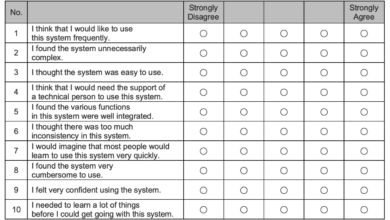
Unica Collaborate Lists and On-Demand Campaigns
Unica collaborate lists and on demand campaigns – Unica Collaborate Lists and on-demand campaigns: Ever felt overwhelmed managing massive customer databases and crafting targeted marketing blasts? This post dives deep into how Unica’s powerful tools can streamline your marketing efforts, from building collaborative lists to launching highly effective, personalized on-demand campaigns. We’ll explore the features, best practices, and even tackle some common integration challenges. Get ready to unlock the true potential of your marketing strategy!
We’ll cover everything from the basics of setting up lists and campaigns to advanced features like A/B testing and personalization. We’ll also discuss the crucial aspects of data security and privacy compliance within the Unica platform. By the end, you’ll have a solid understanding of how to leverage Unica to achieve your marketing objectives efficiently and ethically.
Unica Collaborate Lists

Unica Collaborate Lists is a powerful tool for managing and collaborating on customer data within the IBM Marketing Cloud platform. It streamlines the process of building, segmenting, and sharing marketing lists, enabling more efficient and targeted campaigns. This post delves into its functionality, applications, and benefits, comparing it to other list management solutions.
Core Features of Unica Collaborate Lists
Unica Collaborate Lists offers a robust set of features designed to simplify data management and foster collaboration among marketing teams. Key features include list creation and management tools, advanced segmentation capabilities using various criteria (demographic, behavioral, transactional), version control for tracking changes and ensuring data integrity, secure access control for managing user permissions, and seamless integration with other IBM Marketing Cloud applications, such as Unica Campaign.
This integrated approach minimizes data silos and allows for a more holistic view of the customer.
Applications of Unica Collaborate Lists in Marketing
Unica Collaborate Lists finds applications across a wide range of marketing scenarios. For example, a retailer could use it to create highly targeted lists for personalized email campaigns, segmenting customers based on purchase history, browsing behavior, and demographics. A financial institution might utilize it to identify high-value customers for exclusive offers, creating separate lists for different customer segments (e.g., wealth management, retail banking).
A non-profit organization could use it to manage donor lists, segmenting donors by giving history and engagement level for more effective fundraising campaigns. These are just a few examples of how the flexibility of Unica Collaborate Lists allows for targeted marketing efforts.
Benefits of Using Unica Collaborate Lists for Large Customer Databases
Managing large customer databases can be challenging. Unica Collaborate Lists addresses this by providing efficient tools for data organization, segmentation, and collaboration. Its scalability allows it to handle massive datasets, ensuring that marketing teams can easily manage and segment large customer populations. The advanced features minimize the risk of human error and ensure data consistency across all marketing activities.
The collaborative features allow multiple team members to work simultaneously on the same lists, accelerating campaign development and deployment. Improved data quality leads to more effective campaigns, ultimately improving ROI.
Comparison of Unica Collaborate Lists with Other List Management Tools
Several list management tools exist, each with its strengths and weaknesses. A direct comparison is difficult due to variations in pricing models and feature sets which often depend on specific contracts and package options. However, a general comparison can illustrate key differences.
| Feature | Unica Collaborate Lists | Mailchimp | Constant Contact |
|---|---|---|---|
| Scalability | Excellent; designed for large datasets | Good; suitable for mid-sized lists | Good; suitable for mid-sized lists |
| Segmentation Capabilities | Advanced; allows for complex segmentation rules | Good; offers various segmentation options | Good; offers various segmentation options |
| Integration with other marketing tools | Excellent; integrates seamlessly with IBM Marketing Cloud | Good; integrates with various third-party tools | Good; integrates with various third-party tools |
| Pricing | Enterprise-level pricing; varies based on contract | Subscription-based; various plans available | Subscription-based; various plans available |
| Ease of Use | Moderate; requires some training | Easy; user-friendly interface | Easy; user-friendly interface |
On-Demand Campaigns within Unica

Unica’s on-demand campaign functionality offers marketers a powerful tool for highly targeted, timely messaging. Unlike scheduled campaigns, on-demand campaigns allow for immediate execution, making them ideal for reacting to real-time events, leveraging breaking news, or personalizing communications based on immediate customer actions. This flexibility enhances the effectiveness of marketing efforts by ensuring messages reach the right audience at the most opportune moment.Setting up and executing on-demand campaigns in Unica involves a straightforward process.
First, you define the target audience using Unica’s robust segmentation capabilities. This could involve selecting customers based on demographics, purchase history, website behavior, or a combination of factors. Next, you design your campaign message, ensuring it’s tailored to the specific segment. This includes crafting compelling copy, choosing the appropriate channel (email, SMS, push notifications), and selecting any personalized elements.
Unica’s collaborate lists and on-demand campaigns are game-changers for targeted marketing, allowing for incredibly precise audience segmentation. But to truly maximize their potential, consider integrating them with the powerful development capabilities discussed in this insightful article on domino app dev, the low-code and pro-code future. This allows for more dynamic campaign management and even more refined targeting within Unica’s already impressive features.
Finally, you initiate the campaign from the Unica interface, sending the message immediately to your pre-defined audience. The system provides real-time tracking and reporting, allowing for immediate assessment of campaign performance.
Campaign Design Best Practices
Effective on-demand campaigns require careful planning and execution. A clear marketing objective is crucial; what specific action do you want recipients to take? Is it a purchase, website visit, or form submission? The message should directly support this objective. Personalization is key; using the recipient’s name and referencing their past interactions increases engagement.
A strong call to action (CTA) is essential; make it clear and easy for the recipient to respond. Finally, A/B testing different versions of your message can help optimize performance. For example, testing subject lines, CTA buttons, and overall message tone can reveal which elements resonate most effectively with your audience.
Targeting Strategies
Unica’s on-demand campaigns offer several sophisticated targeting options. Real-time segmentation allows you to target customers based on their immediate actions, such as adding an item to their shopping cart or visiting a specific page on your website. Behavioral targeting allows for focusing on customers who have demonstrated specific behaviors, like repeated website visits or engagement with past marketing emails.
Predictive modeling can identify customers most likely to respond positively to your message based on historical data and machine learning algorithms. For instance, you might target customers with a high propensity to purchase based on their past spending patterns. Combining these strategies allows for highly granular targeting, maximizing campaign effectiveness.
A/B Testing for Optimization, Unica collaborate lists and on demand campaigns
A/B testing is vital for refining on-demand campaign performance. By testing different versions of your campaign elements—subject lines, email content, CTA buttons, and even the timing of the message—you can identify the most effective approaches. For example, you could test two different subject lines to determine which one achieves a higher open rate. Similarly, you could test different versions of your email body copy to see which one results in a higher click-through rate.
Analyzing the results of these tests allows for continuous improvement, maximizing the return on investment for your on-demand campaigns. Continuous A/B testing helps to ensure that your on-demand campaigns are always performing at their best.
Integrating Lists and Campaigns
Successfully integrating Unica Collaborate Lists with on-demand campaigns is crucial for maximizing the effectiveness of your marketing efforts. A streamlined workflow ensures efficient targeting and timely delivery of personalized messages, ultimately boosting campaign performance and return on investment. This section details a practical approach to integration, addresses potential hurdles, and Artikels methods for monitoring and analyzing results.
Step-by-Step Workflow for Integrating Unica Collaborate Lists with On-Demand Campaigns
The integration process involves several key steps, each requiring careful attention to detail. First, you define your target audience and create the appropriate Collaborate List within Unica, ensuring data accuracy and completeness. This involves selecting the appropriate criteria and filters to precisely identify your desired customer segments. Next, you design your on-demand campaign within Unica, leveraging the pre-defined Collaborate List as the target audience.
This includes crafting compelling messaging, selecting the appropriate communication channels (email, SMS, etc.), and scheduling the campaign launch. Once the campaign is designed and approved, you initiate the execution, carefully monitoring the process for any errors or unexpected issues. Finally, you analyze the results, measuring key performance indicators to assess the campaign’s effectiveness and inform future strategies.
Potential Challenges in Integrating Lists and Campaigns and Their Solutions
Several challenges can arise during the integration process. Data discrepancies between the Collaborate List and the campaign database can lead to inaccurate targeting and reduced campaign performance. Solutions involve meticulous data cleansing and validation before integrating the list into the campaign. Another common challenge is ensuring the timely delivery of campaigns. Delays can be caused by technical glitches or insufficient system capacity.
To mitigate this, thorough testing and sufficient system resources are essential. Finally, maintaining data privacy and compliance with regulations is crucial. Failing to do so can result in legal repercussions and reputational damage. Implementing robust data security measures and adhering to relevant regulations are paramount.
Monitoring and Analyzing the Performance of Integrated Lists and On-Demand Campaigns
Effective monitoring and analysis are critical for understanding campaign performance and identifying areas for improvement. Real-time dashboards provide an overview of key metrics, allowing for proactive intervention if needed. Detailed reports offer insights into individual campaign elements, such as open rates, click-through rates, and conversion rates. Analyzing this data helps refine future campaigns, optimizing targeting, messaging, and delivery methods.
A/B testing different versions of campaigns allows for data-driven decision-making, improving campaign effectiveness over time.
Key Performance Indicators (KPIs) to Track the Success of Integrated Campaigns
Tracking the right KPIs is essential for evaluating campaign success. A well-defined set of KPIs provides a clear picture of campaign performance and allows for data-driven improvements.
- Open Rate: The percentage of recipients who opened the campaign message.
- Click-Through Rate (CTR): The percentage of recipients who clicked on a link within the campaign message.
- Conversion Rate: The percentage of recipients who completed a desired action (e.g., purchase, registration).
- Bounce Rate: The percentage of emails that were not delivered.
- Unsubscribe Rate: The percentage of recipients who unsubscribed from the mailing list.
- Return on Investment (ROI): The net profit generated by the campaign, relative to the cost of running it.
- Customer Lifetime Value (CLTV): The predicted total revenue generated by a customer over their relationship with the company.
Advanced Features and Customization Options
Unica’s power truly shines when you delve into its advanced features and customization capabilities. Moving beyond basic campaign creation, these options allow for highly targeted, personalized, and ultimately more effective marketing strategies. This section will explore how to leverage these features to enhance your campaigns and tailor Unica to your specific business needs.
Advanced features in Unica aren’t just about bells and whistles; they’re about optimizing your marketing ROI. By using these tools effectively, you can dramatically improve campaign performance, increase engagement, and ultimately drive better business results. Personalization, dynamic content, and sophisticated segmentation are key elements that contribute to this improved effectiveness.
Leveraging Advanced Features for Enhanced Personalization
Unica offers a robust set of tools to personalize campaigns at scale. This goes beyond simple name insertion; it involves dynamically tailoring content based on individual customer data points. For example, you can use predictive modeling to anticipate customer behavior and deliver highly relevant offers. Imagine a clothing retailer using Unica to analyze past purchases and browsing history.
Based on this data, the system could dynamically generate email campaigns showcasing similar items or suggesting complementary products, leading to higher conversion rates. Furthermore, A/B testing features allow for comparing different personalized approaches, helping optimize messaging and content for maximum impact. This iterative approach to personalization ensures continuous improvement and better campaign performance.
Hypothetical Scenario: Improving Campaign Effectiveness with Advanced Features
Let’s consider a hypothetical scenario for a financial services company. They want to promote a new investment product to their high-net-worth clients. Using Unica’s advanced segmentation capabilities, they can identify clients based on factors like investment portfolio size, risk tolerance, and past investment behavior. The campaign can then be personalized to each client segment, using dynamic content to highlight relevant features of the new product tailored to their specific risk profile and financial goals.
For example, clients with a higher risk tolerance might see messaging emphasizing potential high returns, while more conservative investors might receive information highlighting stability and security. This targeted approach, enabled by Unica’s advanced features, significantly increases the likelihood of engagement and conversion compared to a generic, mass-email campaign.
Customizing Unica to Meet Specific Business Requirements
Unica’s flexibility extends to its customization options. The platform allows for integration with various data sources, enabling a holistic view of customer information. This integration allows marketers to build sophisticated customer profiles, enriching the data used for segmentation and personalization. Furthermore, Unica can be customized to align with specific business workflows and processes. This might involve integrating with existing CRM systems, adjusting reporting dashboards to track key metrics, or creating custom workflows for specific campaign types.
The level of customization possible ensures that Unica seamlessly integrates into existing business infrastructure and supports specific marketing objectives.
Examples of Creative Campaign Designs Using Unica’s Advanced Capabilities
Unica’s advanced capabilities allow for the creation of highly creative and engaging campaigns. Imagine a travel company using Unica to create personalized travel itineraries based on customer preferences. The campaign could dynamically generate an email showcasing suggested destinations, flights, and hotels, all tailored to the individual customer’s past travel history, budget, and preferred travel style. This creates a highly engaging and personalized experience, far exceeding the impact of a generic promotional email.
Another example could be a personalized video campaign where Unica dynamically inserts a customer’s name and specific details into a pre-recorded video, creating a truly unique and memorable experience. This level of personalization fosters a stronger connection with the brand and enhances customer engagement.
Security and Data Privacy Considerations
Unica, like any platform handling sensitive customer data, necessitates a robust security posture and adherence to stringent privacy regulations. Understanding and implementing the appropriate measures is crucial for maintaining customer trust and avoiding legal repercussions. This section details the security features within Unica and Artikels best practices for data protection.
IBM Unica employs a multi-layered security approach to safeguard customer data. This includes robust access controls, encryption both in transit and at rest, regular security audits, and intrusion detection systems. The platform is designed with security best practices in mind, and IBM invests heavily in maintaining and updating these security measures to protect against evolving threats. Specific details about the technical implementation of these security measures are often considered confidential for security reasons, but the overall approach emphasizes a proactive and layered defense strategy.
Data Privacy Regulation Compliance
Compliance with data privacy regulations, such as GDPR, CCPA, and others, is paramount when using Unica for marketing campaigns. This requires careful attention to data collection, processing, storage, and sharing practices. Organizations must ensure that they have appropriate legal bases for processing data, provide transparency to individuals about how their data is used, and implement mechanisms for data subject requests (e.g., access, rectification, erasure).
This involves configuring Unica to respect individual preferences and choices related to data usage and ensuring that all marketing communications are compliant with relevant regulations. Regular internal audits and legal counsel are essential to maintaining ongoing compliance.
Data Security and Privacy Best Practices
Implementing a comprehensive security and privacy strategy within the Unica platform requires a proactive and multi-faceted approach. The following checklist Artikels key best practices:
The importance of these best practices cannot be overstated. A failure to adhere to these standards can result in significant financial penalties, reputational damage, and loss of customer trust.
- Regular Security Audits and Penetration Testing: Conduct regular security audits and penetration testing to identify and address vulnerabilities.
- Access Control Management: Implement strong access control measures, using the principle of least privilege to limit access to sensitive data.
- Data Encryption: Encrypt data both in transit and at rest using industry-standard encryption algorithms.
- Data Loss Prevention (DLP): Implement DLP measures to prevent unauthorized data exfiltration.
- Regular Software Updates and Patching: Keep Unica and all related software updated with the latest security patches.
- Employee Training: Provide regular security awareness training to employees to educate them on best practices and potential threats.
- Incident Response Plan: Develop and regularly test an incident response plan to handle security breaches effectively.
- Data Minimization: Collect only the minimum necessary data for marketing purposes.
- Data Retention Policies: Establish and adhere to clear data retention policies, ensuring data is deleted when no longer needed.
- Compliance Monitoring: Regularly monitor compliance with relevant data privacy regulations.
Data Governance in Relation to Unica Collaborate Lists and On-Demand Campaigns
Effective data governance is essential for managing the risks associated with Unica Collaborate Lists and on-demand campaigns. This involves establishing clear policies and procedures for data collection, processing, and storage, ensuring data quality, and managing data access and security. A robust data governance framework helps organizations comply with data privacy regulations, maintain data integrity, and improve the efficiency and effectiveness of their marketing campaigns.
This includes defining roles and responsibilities for data management, implementing data quality controls, and regularly reviewing and updating data governance policies. For example, a clear policy might define who can access and modify customer lists, how data is validated before use in campaigns, and the process for handling data subject requests. Failing to implement robust data governance can lead to inaccurate data, compliance failures, and ultimately, ineffective marketing campaigns.
Conclusive Thoughts
Mastering Unica Collaborate Lists and on-demand campaigns isn’t just about using the software; it’s about transforming your marketing approach. By strategically integrating these tools, you can create more personalized, impactful campaigns that resonate with your audience and drive tangible results. Remember, consistent monitoring, analysis, and optimization are key to maximizing your ROI. So, dive in, experiment, and watch your marketing efforts soar to new heights!
Quick FAQs: Unica Collaborate Lists And On Demand Campaigns
What is the pricing model for Unica?
Unica’s pricing varies depending on the features and scale required. It’s best to contact their sales team for a customized quote.
How does Unica ensure data accuracy within the lists?
Unica offers data cleansing and deduplication features to maintain accuracy. Regular data audits and updates are also recommended.
What kind of support does Unica provide?
Unica typically provides various support options, including documentation, online help, and dedicated support teams. The specific levels of support may depend on your subscription.
Can I integrate Unica with other marketing tools?
Yes, Unica offers integration capabilities with a range of CRM and marketing automation platforms. The specific integrations available will depend on your Unica version.





